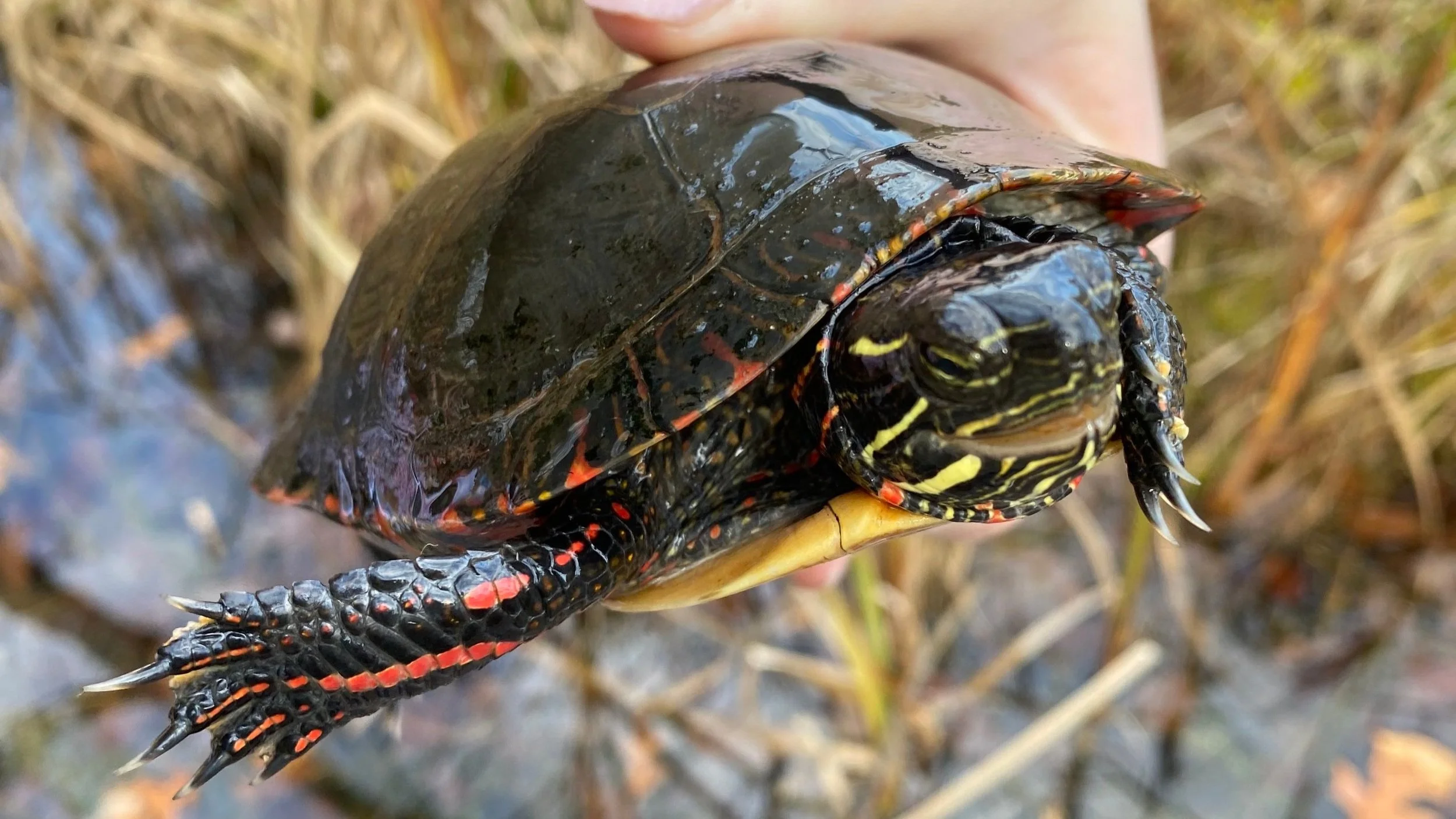To start our afternoon, Ms. Paige asked the question, “What does it mean to be a predator and prey?” We talked about predators’ adaptations, like strong hunting skills, sharp teeth and claws, speed, size, etc. that help them capture their food, prey. Prey are often smaller, sneaky, and camouflaged to blend into their environments, but sometimes they can be larger animals–even predators themselves. We then drew our favorite predators and their prey in our nature journals, sharing with the class when we were done. We discussed apex predators, the top predator in a food chain that has minimal or no predators of its own. Wolves and bears are apex predators, for example, unless they are hunted by humans… maybe we are the ultimate apex predator. One of our friends drew a mushroom, which was a really important topic of discussion. Mushrooms and other fungi break down dead and decaying material; therefore, a mushroom could prey upon the apex predators of the food chain.
Next, we participated in a predator and prey simulation. We discussed the choices prey have to defend themselves against predators–they can fight (we did not participate in this option today), flee, hide, and freeze. One friend volunteered to be a predator, a peregrine falcon, and stood in the field. Their goal was to “eat” (collect the bandana of) the prey, who were pigeons. The prey’s goal was to make it down the field and back four times, collecting food tokens as they went, without getting eaten. If the predator approached, they could run, crouch and freeze, or “hide” in a hula hoop burrow. Each round lasted 3 minutes or less, simulating the changing seasons. Prey that were eaten became predators the next round. Prey that were not eaten by the predator needed to have four food tokens to survive for the next round, otherwise they became predators, too. Predators that did not eat in a round became prey. This simulated the changing populations as the number of prey decreased and number of predators increased.
After this activity, we talked about food chains and food webs, learning that producers (plants) use energy from the sun to grow, consumers eat producers and other consumers to receive energy, and decomposers decompose producers and consumers for their energy, recycling the nutrients back into the ecosystem. We each became a forest organism and tossed a ball of string to organisms that interacted with us as food or habitat, forming a giant web. When we tugged on the string, we could feel how we were all connected to each other.
Next, it was finally time to hike! We went down to the Frog Boardwalk on Sabin Pond Trail, where we saw two green frogs, one bullfrog, and one painted turtle. Ms. Paige actually caught the turtle and let us feel its shell! We ended our hike in the Pine Forest, where we continued building our forts before it was time to get ready to head home. We had just enough time to check out the Nature Playscape and help Ms. Rachel organize the shed.



























